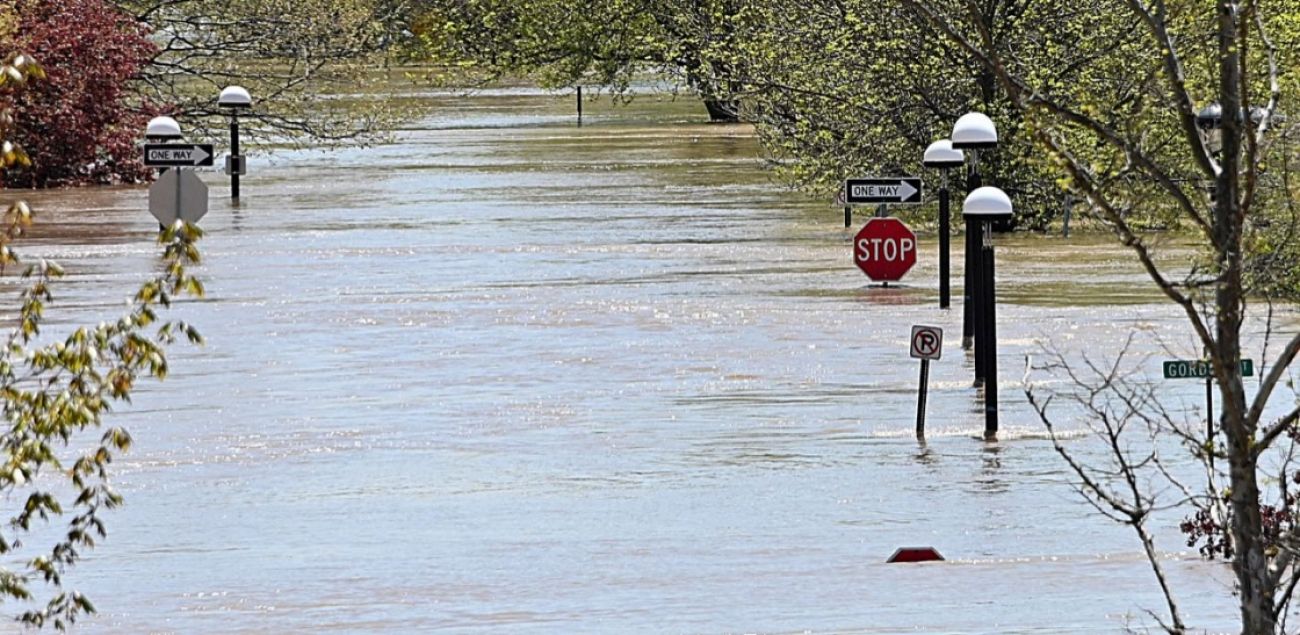Michigan should have protected public from unsafe Edenville Dam, experts say

When the Edenville Dam failed this month, sending a torrent of water into Midland, Michigan officials were waiting for an overdue report to prove a dam deemed dangerous for decades didn’t meet state standards.
Michigan officials say they had no choice because they started at “ground zero” after inheriting oversight of the mid-Michigan dam in 2018, when federal officials revoked its license to generate power.
Michigan has different regulations than the federal government, but safety experts who spoke to Bridge say the state should have moved faster to protect the public against a dam with a 25-year history of noncompliance and safety warnings.
Related: How weak regulations failed to prevent catastrophe at notorious Midland dam
“When there's public safety at stake, you don't have conversations. You actually do something about it,” said Hiba Baroud, a professor of civil and environmental engineering at Vanderbilt University who specializes in risk analysis of infrastructure.
“Nature is not going to wait until these issues are resolved within a system. If it’s going to rain, it’s going to rain and you're going to have to deal with it.”
Michigan environmental officials have defended their handling of the Edenville Dam in the aftermath of the May 19 flood, saying they were amid a study of the dam’s safety. An initial state inspection deemed it in “fair structural condition” in October 2018.
A more complete report was expected in March. It still hadn’t arrived when heavy rains punched a hole through the Edenville Dam’s earthen embankment, unleashing a torrent of water that also overwhelmed the Sanford Dam and forced 10,000 people to evacuate in Midland, Gladwin and Saginaw counties.
The Federal Energy Regulatory Commission, the national agency responsible for regulating dams that produce hydroelectric power, had produced decades of scathing reports about the potential dangers of the Edenville Dam.
The dam was rated in poor condition and had high downstream hazard potential, which means at least one person would be expected to die if it fails.
Federal regulators made that clear in years of legal prodding to the private dam owner, Boyce Hydro Power LLC. In a 2017 compliance order, they wrote Boyce’s “disregard for the severity of this situation is appalling.”
“The potential loss of life and destruction of property and infrastructure is grave should the project not be maintained,” the order read.
That should have been a big “red flag” for Michigan inspectors to fast-track inspections and take action, said Denis Binder, a law professor at Chapman University in southern California who specializes in dam safety litigation.
“You can make your own good luck and you can make your own bad luck,” Binder said. “So for [Michigan regulators,] it’s not bad luck. It was probably a failure waiting to happen.”
Michigan officials say their hands were tied because it would have taken clear evidence to compel the dam’s owners to make repairs or overcome a court’s ruling setting water levels at Wixom Lake.
Long investigation, delayed action
When the federal government terminated Boyce’s license and the dam fell into the hands of state regulators, safety requirements dropped significantly as well.
FERC regulations require dams to be able to safely pass 100 percent of the probable maximum flood (PMF), the amount of water expected in the most severe storm reasonably possible in the area.
- Related: Two heirs bought Midland dams as a tax shelter. Tragedy followed.
- Related: Gov. Gretchen Whitmer launches investigation into Midland dam failures
- Related: Mid-Michigan dam that failed was cited for years for safety violations
- Related: Michigan regulators moved fast on dangerous dam. To protect mussels.
- Related: Michigan GOP calls for Nessel to step down from investigation into dam failure
Michigan requires that dams meet only half of that, which federal officials consider one of the weakest design standards in the nation.
It was clear the Edenville Dam didn’t meet the 100 percent requirement, but state regulators say they weren’t certain if it met the 50 percent one.
Boyce was responsible for paying for the study and hiring consultants to study its dam, which the state would then sign off on.
“That’s not always how such work is done, but it is fair to say it’s a typical arrangement,” Hugh McDiarmid Jr., a state energy spokesperson, wrote in an email to Bridge.
State emails provided to Bridge show a state dam inspector told consultants in early 2019 that inspectors have received all PMF studies from Boyce and would begin reviewing them. This January, Michigan dam safety inspector Luke Trumble wrote to Boyce’s consultants, Spicer Group, that initial findings indicated the dam wouldn’t meet state standards.
“Factor in wave run up/set up, and the deficiency increases significantly,” Trumble wrote. “No big surprise there, but I wanted to have the calcs to support that assumption before EGLE makes a final determination on hydraulic adequacy of the dam.”
That finding, coupled with years of federal reports, should have compelled the state regulators to take temporary action to protect public safety until a permanent solution could be reached, said Baroud. She said operating the dam at a lower lake level could “allow for these extreme [rain] situations to occur without resulting in a disaster.”
“You have to prioritize public safety,” Baroud said. “You have to take action, not wait, or have conversations about it. Just take action.”
McDiarmid said the state couldn’t push for lowering lake levels because there was a Circuit Court-ordered water level set in May 2019 after years of fluctuating levels due to conflicts with Boyce. The order required the Edenville Dam to comply with FERC license requirements despite the recent revocation.
McDiarmid said the state couldn’t demand repairs or push for lowering lake levels without the final consultant’s report, which would have provided solid evidence to prove action was necessary.
Otherwise, it would set the state up for a legal battle, McDiarmid said.
“Moving forward with enforcement without the Spicer report to verify the initial findings would have left the enforcement actions open to challenge – particularly if the Spicer report did not concur with the [January] assumptions [that the dam didn’t meet state standards] — further delaying improvements,” McDiarmid wrote in an email.
Protecting mussels
While the state awaited conclusive evidence about dam safety, it forged ahead with a lawsuit over the environmental impacts on lake levels, even though Boyce contended it conducted no studies into the matter.
In early May, Attorney General Dana Nessel sued Boyce on claims it killed “thousands if not millions of freshwater mussels” by lowering levels of Wixom Lake two years in a row without state permission.
Boyce alleged that was speculation because the state filed suit without “having first provided any validated scientific or other technical evidence” of mass mussel deaths, according to a federal lawsuit from the company against the state a few weeks ago.
Boyce also alleged the state was pressuring it to raise lake levels despite public safety warnings, a claim McDiarmid said is “really disingenuous” because the state was seeking compensation for breaking rules during past winter seasons, when there is little risk of rainfall.
He noted that Michigan has two safety inspectors and one supervisor to oversee 1,061 dams who, given the staffing constraints, moved “reasonably aggressively” against the dam. Binder and Baround said the state had an obligation to demand further safety measures as it awaited a final report.
“It's clear that the floodplain downstream endangers a major city. And to me, that would be on the high priority list for getting it right,” Binder said.
The Edenville and Sanford Dams may just be the beginning for Midland-area residents. As they work to dig out from catastrophic flooding, federal regulators now say two other dams owned by Boyce Hydro also were damaged in the rainstorm.
In a letter sent Thursday to Boyce Hydro a regional engineer with FERC noted that “initial observations noted significant flood erosion damage of Smallwood Dam and some erosion of the downstream slopes of Secord Dam.”
FERC officials have directed Boyce to submit an incident report by June 16 detailing recent operating conditions at the Secord, Smallwood and Sanford dams. They also asked the company to report what flood-fighting efforts Boyce conducted and any repairs done at Smallwood and Secord during or following the event.
The agency also directed Boyce to conduct forensic investigations at Sanford, Secord and Smallwood dams, which will happen as another investigation is happening at the state level.
Michigan Gov. Gretchen Whitmer last week directed EGLE to investigate what caused the failure at Edenville, which it oversees.
That means the state environmental agency, at least in part, will be investigating itself, raising conflict concerns from state Republicans, flooding victim advocates and dam safety experts.
Speaker of the House Lee Chatfield, R-Levering, wrote on Twitter that the state needs to ensure “the fox isn’t guarding the hen house.”
Binder agreed, but said it’s not abnormal for Whitmer to have EGLE lead the investigation.
“They should hire an independent firm to do the inspection. That removes any taint of conflict of interest or lack of independence,” he said.
Michigan Environment Watch
Michigan Environment Watch examines how public policy, industry, and other factors interact with the state’s trove of natural resources.
- See full coverage
- Subscribe
- Share tips and questions with Bridge environment reporter Kelly House
Michigan Environment Watch is made possible by generous financial support from:
Our generous Environment Watch underwriters encourage Bridge Michigan readers to also support civic journalism by becoming Bridge members. Please consider joining today.
See what new members are saying about why they donated to Bridge Michigan:
- “In order for this information to be accurate and unbiased it must be underwritten by its readers, not by special interests.” - Larry S.
- “Not many other media sources report on the topics Bridge does.” - Susan B.
- “Your journalism is outstanding and rare these days.” - Mark S.
If you want to ensure the future of nonpartisan, nonprofit Michigan journalism, please become a member today. You, too, will be asked why you donated and maybe we'll feature your quote next time!






